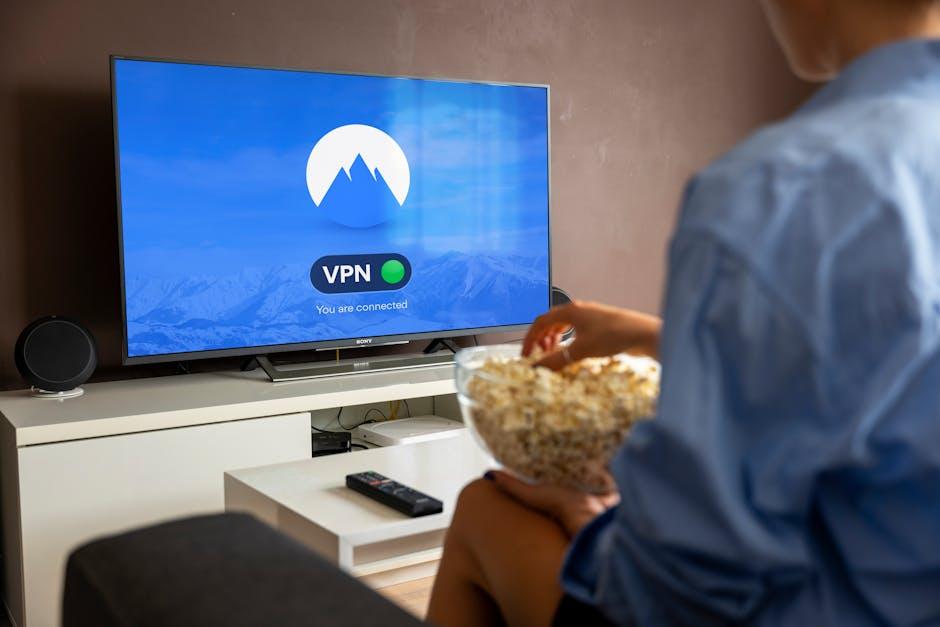In today’s digital age, streaming devices have revolutionized the way we consume media, offering unprecedented access to a vast array of content at our fingertips. From binge-watching the latest series to exploring niche documentaries, these devices have become integral to our daily entertainment routines. However, as we immerse ourselves in this convenient digital ecosystem, it’s crucial to examine the potential trade-offs that come with it, particularly concerning our privacy. This article delves into the intricate balance between the convenience of unlimited access and the safeguarding of personal information, exploring whether the benefits of streaming devices are worth the potential risks to our privacy. Through a comprehensive analysis, we aim to equip readers with the knowledge to make informed decisions about their digital consumption habits.
Understanding the Privacy Risks of Streaming Devices
In the age of convenience, streaming devices have revolutionized how we consume media, but they also bring with them a host of privacy concerns that are often overlooked. As these devices become more ingrained in our daily lives, it’s crucial to understand the potential risks they pose. Data collection is at the forefront of these concerns. Streaming devices frequently collect information such as viewing habits, personal preferences, and even voice recordings. This data is often shared with third parties, leading to targeted advertising and, in some cases, more sinister uses.
- Unsecured Networks: Many users do not adequately secure their home networks, leaving streaming devices vulnerable to hackers.
- Default Settings: Often, the default settings on these devices are not privacy-friendly, requiring manual adjustments to ensure data is not unnecessarily shared.
- Third-Party Apps: Additional applications installed on streaming devices can have their own privacy policies, which may not align with user expectations.
To mitigate these risks, users should regularly update their devices, review privacy settings, and be selective about the permissions granted to apps. By taking these steps, individuals can enjoy the benefits of streaming technology without sacrificing their privacy.
Evaluating the Balance Between Convenience and Security
In the rapidly evolving landscape of streaming devices, users are constantly navigating the fine line between the allure of convenience and the imperative of security. As these devices become increasingly integrated into our daily lives, offering seamless access to a myriad of content, they also open the door to potential privacy vulnerabilities. On one hand, the ease of use, instant access to a world of entertainment, and smart features can enhance the user experience significantly. On the other hand, these same features can inadvertently expose users to data breaches, unauthorized access, and privacy invasions.
- Ease of Use: Streaming devices often prioritize user-friendly interfaces, allowing even the least tech-savvy individuals to navigate them with ease.
- Instant Access: The ability to access a vast array of content on-demand is a significant draw, making it tempting to overlook potential security risks.
- Smart Features: Voice control, personalized recommendations, and integration with other smart home devices increase convenience but can also collect more personal data.
- Privacy Concerns: Many devices collect user data to improve services, but the extent of data collection and the potential for misuse can be unsettling.
As consumers, it is crucial to be informed and vigilant, striking a balance that ensures our privacy is not sacrificed for the sake of convenience. This involves being aware of the permissions granted to these devices, regularly updating software to patch security vulnerabilities, and considering the use of additional security measures such as virtual private networks (VPNs). By staying informed and cautious, users can enjoy the benefits of streaming devices while safeguarding their personal information.

Implementing Effective Privacy Measures for Streaming Users
To ensure the protection of user data in the realm of streaming, companies need to adopt a series of privacy-focused strategies. A foundational step is to implement end-to-end encryption for all data transmitted between the device and streaming service. This ensures that user data remains confidential and protected from unauthorized access. Moreover, adopting a policy of data minimization—collecting only the data that is absolutely necessary for functionality—can significantly reduce the risk of sensitive information being compromised.
- Transparent Privacy Policies: Clearly outline what data is collected, how it is used, and who it is shared with.
- User-Controlled Settings: Provide users with the ability to adjust privacy settings, such as opting out of data collection or anonymizing viewing history.
- Regular Audits: Conduct frequent security audits to identify and rectify vulnerabilities in data protection protocols.
Educating users about privacy risks and the tools available to protect their data is also crucial. Empowering users with knowledge can lead to more informed decisions regarding their personal information and its exposure while using streaming services.

Recommendations for Enhancing Privacy Without Sacrificing Access
- Regularly Update Software: Keeping your streaming devices and applications updated is crucial. Manufacturers frequently release patches and updates to address security vulnerabilities. Ensure automatic updates are enabled, or set reminders to manually check for updates.
- Utilize Strong Passwords: Use complex and unique passwords for each streaming account. Consider employing a password manager to help create and store secure passwords, reducing the risk of unauthorized access.
- Review Privacy Settings: Dive into the privacy settings of your streaming devices and applications. Limit data sharing by disabling features that track viewing habits or personal information unless absolutely necessary for functionality.
- Use VPNs: A Virtual Private Network (VPN) can add an extra layer of security by encrypting your internet connection, making it harder for third parties to track your online activities.
- Regularly Audit Device Access: Periodically check the devices connected to your streaming accounts. Remove any that you no longer use or recognize to prevent unauthorized access.
By implementing these strategies, users can enjoy the vast array of content available on streaming platforms while maintaining a higher degree of privacy. Balancing convenience with security ensures a safer, more controlled viewing experience.
In Retrospect
the proliferation of streaming devices has undeniably transformed the way we access and consume media, offering unprecedented convenience and choice. However, this convenience often comes with significant privacy trade-offs that users may not fully comprehend. As we navigate this digital landscape, it is crucial to remain informed about the data these devices collect and how it is used. By understanding the privacy implications and taking proactive steps to safeguard personal information, consumers can enjoy the benefits of streaming technology without compromising their privacy. As technology continues to evolve, ongoing vigilance and informed decision-making will be key in balancing access with privacy.






































